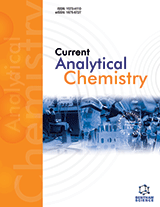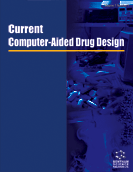Abstract
Aim and Objective: Surface Plasmon Resonance (SPR) based biosensor system was developed for the detection of Delta F508 (ΔF508del) Cystic Fibrosis (CF) mutation in both synthetic and real samples.
Material and Method: In order to provide an effective hybridization between probe and the Polymerase Chain Reaction (PCR) amplicons (target), streptavidin was bound to the surface and biotin-tag probe was sent to the streptavidin-coated surface. For the target preparation, blood samples were collected from the patients who suffer from CF. Following the DNA isolation; samples were amplified with PCR with biotin-tag. Before sending the biotin-tag PCR amplicons onto the modified surface, amplicons were also interacted with the helper oligonucleotides to prevent re-annealing of the denatured DNA strands. This kind of ‘multiple surface binding’ method helps increasing the sensitivity of the detection. Results: The limit of detection (S/N= 3) was calculated as 12.24 pico-mole/ml for PCR-like synthetic long target sequence and 13x105 molecules for real samples in less than half an hour. Conclusion: Using the both biotin-tag probe and the helper oligonucleotides together, hybridization was achieved much more efficiently than traditional denaturation protocols for real samples and biotinfree hybridization detection. To the best of our knowledge, the procedure described in this study is one of the simplest, rapid and sensitive methods for CF mutation detection with SPR based biosensor system in real samples.Keywords: Surface Plasmon Resonance (SPR) spectroscopy, Delta F508 (ΔF508del) cystic fibrosis mutation, DNA hybridization, polymerase chain reaction (PCR) amplified samples, optical biosensor.
Combinatorial Chemistry & High Throughput Screening
Title:Cystic Fibrosis Mutation Detection with SPR Biosensor in Real Samples via Multiple Surfaces Binding Method
Volume: 20 Issue: 1
Author(s): Yasin Ugur Kayran, Dilsat Ozkan-Ariksoysal, Seda Nur Topkaya, Burcin Tezcanli Kaymaz and Buket Kosova Can
Affiliation:
Keywords: Surface Plasmon Resonance (SPR) spectroscopy, Delta F508 (ΔF508del) cystic fibrosis mutation, DNA hybridization, polymerase chain reaction (PCR) amplified samples, optical biosensor.
Abstract: Aim and Objective: Surface Plasmon Resonance (SPR) based biosensor system was developed for the detection of Delta F508 (ΔF508del) Cystic Fibrosis (CF) mutation in both synthetic and real samples.
Material and Method: In order to provide an effective hybridization between probe and the Polymerase Chain Reaction (PCR) amplicons (target), streptavidin was bound to the surface and biotin-tag probe was sent to the streptavidin-coated surface. For the target preparation, blood samples were collected from the patients who suffer from CF. Following the DNA isolation; samples were amplified with PCR with biotin-tag. Before sending the biotin-tag PCR amplicons onto the modified surface, amplicons were also interacted with the helper oligonucleotides to prevent re-annealing of the denatured DNA strands. This kind of ‘multiple surface binding’ method helps increasing the sensitivity of the detection. Results: The limit of detection (S/N= 3) was calculated as 12.24 pico-mole/ml for PCR-like synthetic long target sequence and 13x105 molecules for real samples in less than half an hour. Conclusion: Using the both biotin-tag probe and the helper oligonucleotides together, hybridization was achieved much more efficiently than traditional denaturation protocols for real samples and biotinfree hybridization detection. To the best of our knowledge, the procedure described in this study is one of the simplest, rapid and sensitive methods for CF mutation detection with SPR based biosensor system in real samples.Export Options
About this article
Cite this article as:
Kayran Ugur Yasin, Ozkan-Ariksoysal Dilsat, Topkaya Nur Seda, Kaymaz Tezcanli Burcin and Can Kosova Buket, Cystic Fibrosis Mutation Detection with SPR Biosensor in Real Samples via Multiple Surfaces Binding Method, Combinatorial Chemistry & High Throughput Screening 2017; 20 (1) . https://dx.doi.org/10.2174/1386207320666170103154226
| DOI https://dx.doi.org/10.2174/1386207320666170103154226 |
Print ISSN 1386-2073 |
| Publisher Name Bentham Science Publisher |
Online ISSN 1875-5402 |
 23
23 2
2
- Author Guidelines
- Bentham Author Support Services (BASS)
- Graphical Abstracts
- Fabricating and Stating False Information
- Research Misconduct
- Post Publication Discussions and Corrections
- Publishing Ethics and Rectitude
- Increase Visibility of Your Article
- Archiving Policies
- Peer Review Workflow
- Order Your Article Before Print
- Promote Your Article
- Manuscript Transfer Facility
- Editorial Policies
- Allegations from Whistleblowers
Related Articles
-
Analytical Procedures for Secondary Metabolites Determination: Recent Trends and Future Perspectives
Letters in Drug Design & Discovery Cyclosporin and Organ Specific Toxicity: Clinical Aspects, Pharmacogenetics and Perspectives
Current Clinical Pharmacology Pleiotropic Role of HSF1 in Neoplastic Transformation
Current Cancer Drug Targets Community-Acquired Pneumonia and Outcome: The Importance of Genetics
Current Respiratory Medicine Reviews Development and Evaluation of Novel Tabletted Microspheres for Controlled Release of Glimepiride
Current Drug Therapy Age-Related Changes in P-Glycoprotein Expression in Senescence- Accelerated Mouse
Current Aging Science Application of Monoclonal Antibodies as Cancer Therapy in Solid Tumors
Current Clinical Pharmacology Neuroinflammation: A Therapeutic Target of Cotinine for the Treatment of Psychiatric Disorders?
Current Pharmaceutical Design Atherosclerosis, Degenerative Aortic Stenosis and Statins
Current Drug Targets Selective Serotonin Re-Uptake Inhibitors for the Treatment of Depression in Coronary Artery Disease and Chronic Heart Failure: Evidence for Pleiotropic Effects
Cardiovascular & Hematological Agents in Medicinal Chemistry From CHD Susceptibility Genes to New Therapeutics
Current Pharmacogenomics Structural, Biochemical and Non-Traditional Cardiovascular Risk Markers in PCOS
Current Pharmaceutical Design Blood Pressure as a Therapeutic Target in Stroke
Current Topics in Medicinal Chemistry Hitting the Golden TORget: Curcumin’s Effects on mTOR Signaling
Anti-Cancer Agents in Medicinal Chemistry CD26 / Dipeptidyl Peptidase IV: A Regulator of Immune Function and a Potential Molecular Target for Therapy
Current Drug Targets - Immune, Endocrine & Metabolic Disorders Definitions of Metabolic Syndrome: Where are We Now?
Current Vascular Pharmacology Metformin Beyond Diabetes: New Life for an Old Drug
Current Diabetes Reviews TNF-α/Cycloheximide-Induced Oxidative Stress and Apoptosis in Murine Intestinal Epithelial MODE-K Cells
Current Pharmaceutical Design Insulin Resistance and Type 2 Diabetes - An Adipocentric View
Current Molecular Medicine Targeting miRNAs for Drug Discovery: A New Paradigm
Current Molecular Medicine


























